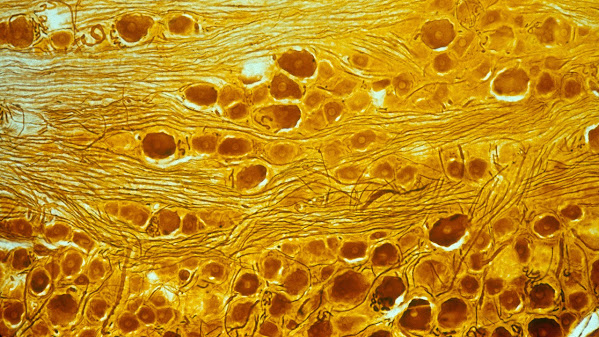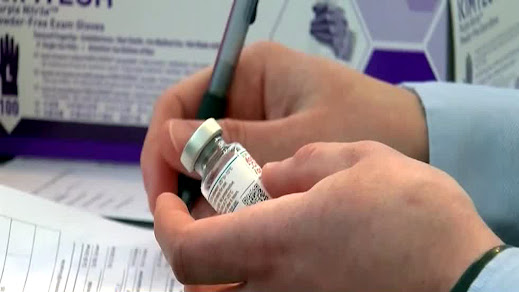Gene-silencing injection reverses pain in mice
Gulping an oxycodone pill may calm nerves and gruff torment, however, the medication makes other undesirable visits in the mind—to focuses that can drive compulsion and stifle relaxing. Presently, an examination in mice shows specific sorts of agony can be forestalled or switched without clear results by quieting a quality engaged with torment flagging. If the methodology climates further testing, it could give constant torment patients a more secure and longer-enduring alternative than narcotics.
"It's a wonderful piece of work," says Rajesh Khanna, a neuroscientist who studies torment instruments and likely medicines at the University of Arizona. Regardless of triumphs of quality treatment against uncommon and hazardous problems, barely any groups have investigated hereditary ways to deal with treating torment, he says. That is partially a result of hesitance to for all time change the genome to address conditions that, albeit crippling, aren't generally perpetual or lethal. However, the new methodology doesn't modify the DNA grouping itself and is hypothetically reversible, Khanna notes. "I think this examination will be our benchmark."
A prick of the finger or a punch in the gut causes torment since nerves expanding through our bodies venture into the spinal string to hand-off messages to the mind. Those messages can endure even after the underlying injury has mended, causing ongoing torment.
To fire their electrical signs, torment detecting nerves depend on the progression of particles across protein directs in their layers. One such channel, called Nav1.7, stands apart for the exceptional agony problems that emerge when it glitches. Individuals with hereditary changes that make Nav1.7 overactive are inclined to assaults of consuming agony. Those with changes that deactivate Nav1.7 feel no agony by any means.
"In course books, you can track down these terrible pictures of kids without fingers and with just a large portion of a nose, since they didn't see when they harmed themselves," says Claudia Sommer, a nervous system specialist at the University of Würzburg.
Nav1.7 is a conspicuous objective for torment tranquilizes however obstructing the actual channel has demonstrated interesting. A few early medication competitors fizzled in clinical preliminaries. One significant test is finding a medication that ties to Nav1.7 while dodging comparative diverts in the Nav family that are essential to the sensory system, heart, and different organs.
In the new investigation, scientists rather planned to lessen the measure of Nav1.7 that cells make in any case. Bioengineer Ana Moreno and her associates at the University of California, San Diego, adjusted the "atomic scissors" of the quality editorial manager CRISPR. Changes to the slicing compound Cas9 made it tie to DNA that makes Nav1.7 without cutting it, successfully keeping the Nav1.7 protein from being made. The scientists improved this quieting impact by hitching Cas9 to a repressor, another protein that restrains quality articulation.
The analysts tried the Cas9 approach—and a comparative methodology utilizing another quality altering protein known as a zinc finger—in mice given the chemotherapy drug paclitaxel, which can cause ongoing nerve torment in malignant growth patients. The group estimated torment by jabbing the creatures' paws with flimsy nylon fiber. Paclitaxel incited mice to pull out from gentler jabs, demonstrating that an ordinarily nonpainful boost had gotten agonizing. In any case, multi-month after infusion of the quality quieting treatment into their spinal liquid, rodents reacted similar to mice that had never gotten paclitaxel, though untreated rodents stayed excessively touchy, the group reports today in Science Translational Medicine.
The methodology could likewise forestall torment when given before paw infusions of either the irritation causing compound carrageenan or a particle considered BzATP that builds torment affectability. What's more, treated mice carried on no uniquely in contrast to untreated ones when their contrary paw—not aggravated via carrageenan—was presented to a hot surface. That is an empowering beginning sign that the infusion didn't quietness Nav1.7 so totally that it makes a hazardous deadness to all torment, Moreno says. Social tests so far haven't turned up proof of possibly concerning results; the infusions didn't seem to modify the creatures' development, perception, or nervousness levels.
It's not yet clear how long the impacts of an infusion last, Moreno says; her group contemplated the carrageenan-presented mice as long as 10 months after treatment and still saw impacts. Yet, she expects that adjustments in the epigenome—the substance intensifies that stud DNA and control quality articulation—may normally turn around the impacts of the quality hushing proteins after some time.
The methodology "is overly shrewd," says Holly Kordasiewicz, head of nervous system science at Ionis Pharmaceuticals. The organization is creating torment medicines to hinder the creation of Nav1.7 utilizing hereditary strands called antisense oligonucleotides, the impacts of which Kordasiewicz says would almost certainly be more limited in length than the quality hushing approach.
All things considered, the expense could keep a hereditary technique from turning into therapy for a condition as basic as ongoing torment, alerts neurobiologist John Wood of University College London. "Quality treatment is actually quite engaging mentally," he says, yet it's so costly to fabricate the treatments—specifically the infections that convey hereditary material to cells—that numerous organizations are hesitant to put resources into it.
Moreno expects an inevitable quality quieting treatment for the torment to work at lower portions (and expenses) than quality treatments effectively in the center, to a limited extent since it would be correctly conveyed to target cells using a spinal infusion as opposed to coursing in the circulatory system.
She and her colleagues have additionally established an organization, Navega Therapeutics, to build up their methodology. They will start by attempting to treat acquired erythromelalgia, an uncommon hereditary agony problem brought about by overactive Nav1.7. In the end, Moreno trusts the methodology can treat more normal kinds of persistent torment, including nerve torment brought about by chemotherapy and diabetes. The organization is presently getting ready for a pivotal subsequent stage in the examination: tests in nonhuman primates.



Comments
Post a Comment